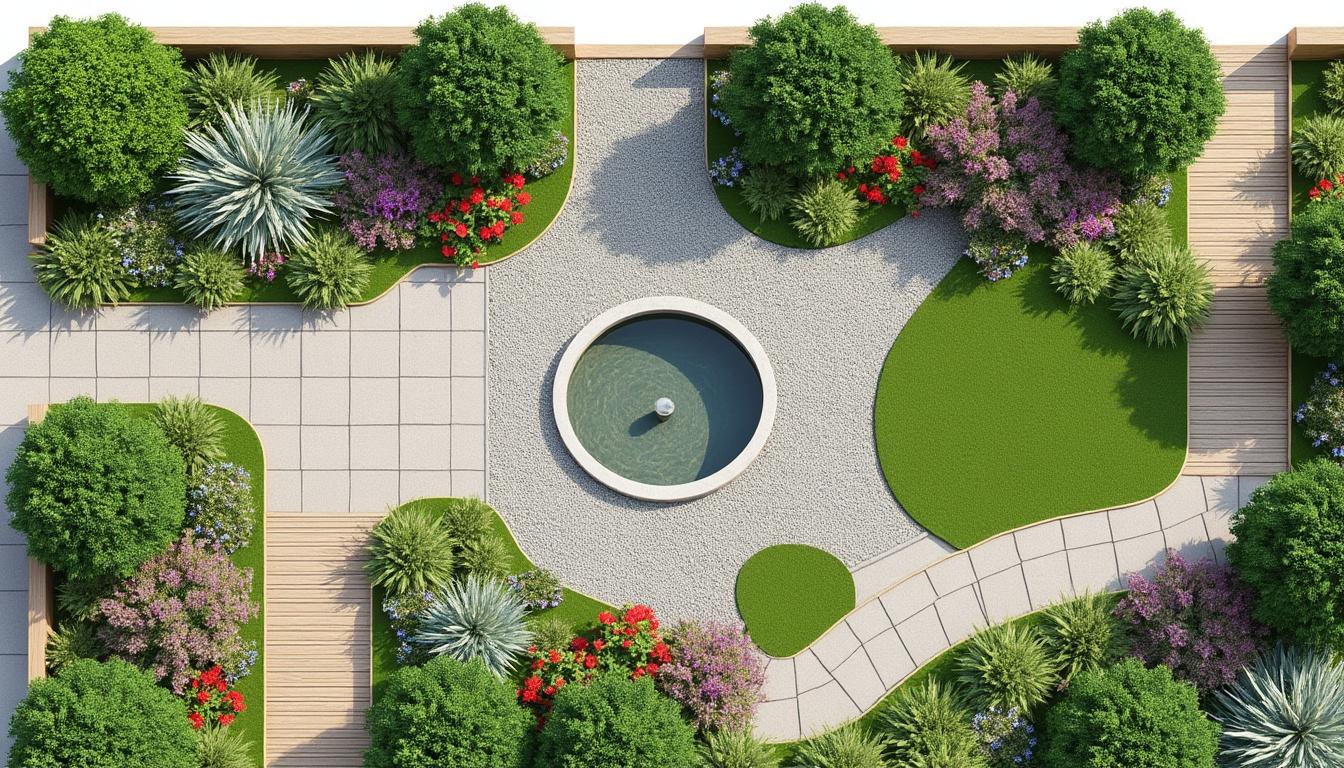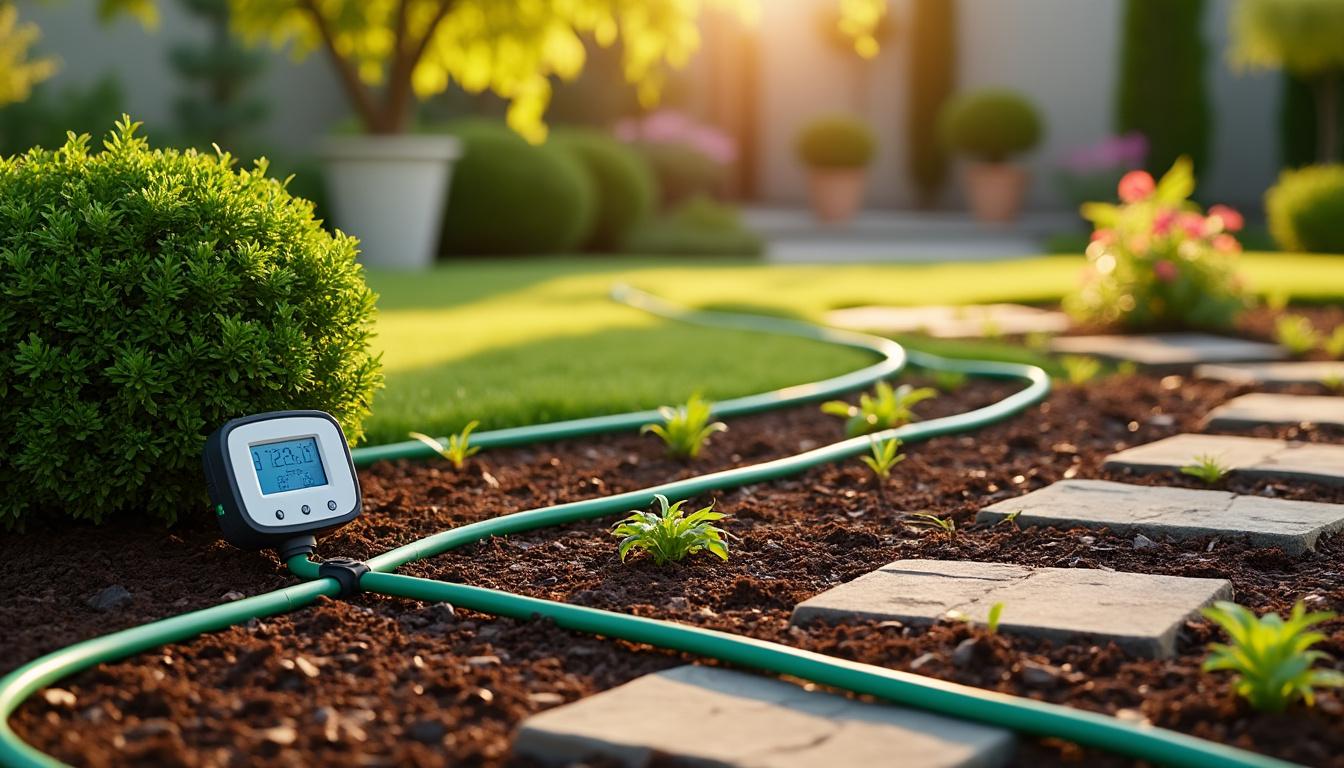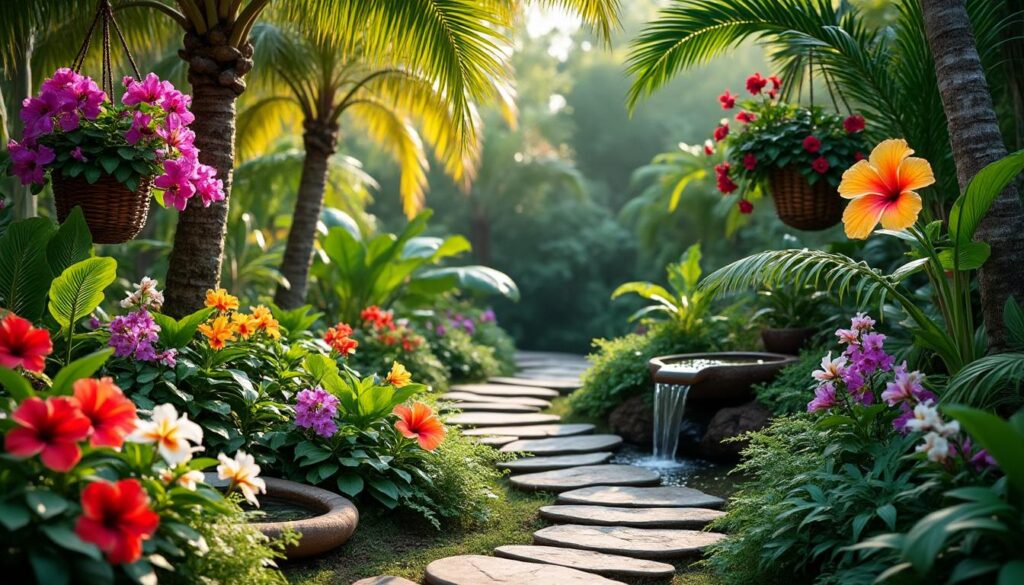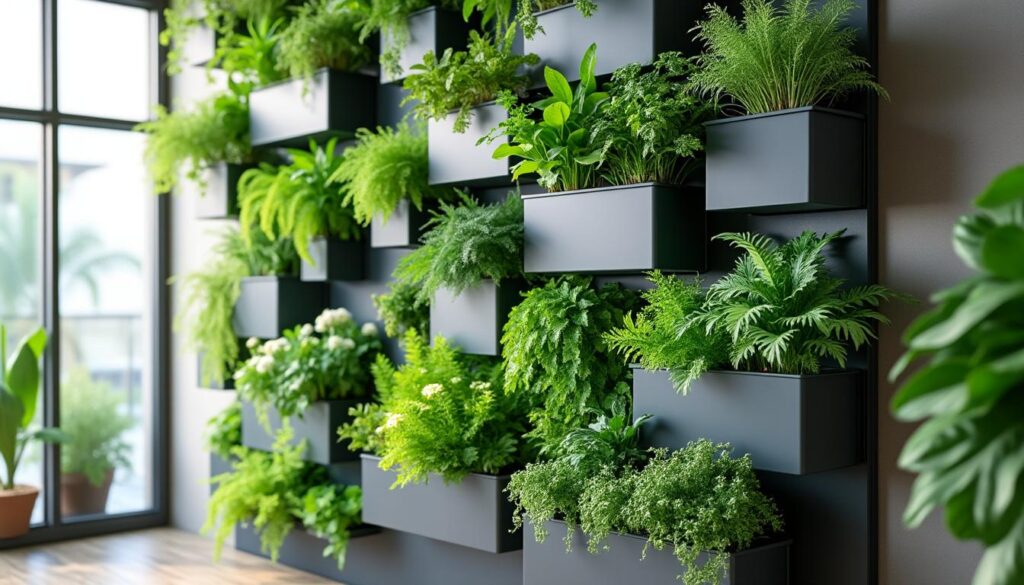Taking care of a beautiful and healthy garden does not depend on miracles, but on smart and consistent choices throughout the year. This guide brings together reliable practices for you to plant well, water efficiently, and keep each bed at its best, without waste and with respect for the environment.
To make it easier, below is a straightforward summary with the priorities that truly make a difference in day-to-day life.
| Short on time? Here’s the essentials: ⏱️ |
|---|
| ✅ Plan for light and soil 🌤️ — map sun/shade areas and adjust species and watering to the microclimate. |
| ✅ Water early and locally 💧 — drip + mulch reduce evaporation and fungi. |
| ✅ Fertilize with compost 🌱 — 1-2 times/year improves soil structure and plant health. |
| ✅ Prune at the right time ✂️ — clean scissors and precise cuts prevent diseases and speed up flowering. |
| ✅ Make a seasonal calendar 📅 — small weekly routines prevent last-minute “blackouts.” |
Sustainable garden planning: light, soil, and smart design
An efficient garden is born from planning. Before planting, it is worth observing for a week how light moves across the land, where the wind prevails, and how water drains after rain. This initial look avoids rework and helps position each species where it will perform best, reducing watering and fertilization in the future.
The case of the Silva family, in an urban yard in Lisbon, illustrates this well: the ornamental pond was in a spot with great sunlight and lost water through evaporation. By moving it to partial shade and creating a windbreak hedge with laurels, water consumption decreased and the temperature of the water surface stabilized, benefiting water lilies and dragonflies.
Mapping light, wind, and water
Identifying areas of full sun and shade allows for grouping plants by needs. Reserve south and west-facing facades for sun-loving herbs and flowering plants, and shaded corners for ferns and hydrangeas. Observe the direction of the wind: living barriers with dense shrubs reduce leaf dehydration and stem flopping.
Water follows gravity. After rain, notice where puddles form and where the soil dries out quickly. These points define drain beds (for succulents) and retention areas (for gardens or fruit trees). Integrating infiltration ditches and small basins at the base of trees increases soil recharge and decreases local flooding.
Reading the soil and avoiding generic solutions
The soil is the “rooting system of the garden.” In clay soils, slow drainage requires organic matter and coarse sand; in sandy soils, water retention improves with compost and biochar. Simple tests, like the sedimentation jar or a pH kit, guide correction without waste. Avoid “one-size-fits-all recipes” and adjust for each bed.
Designing zones and circulation
Creating zones (rest, production, children’s play, composting) prevents trampling of sensitive areas and facilitates maintenance. Passages with gravel, pine bark, or permeable paving allow water to reach the soil, mitigating heat islands. A smart design brings faucets and light points closer to the areas that need them most, reducing exposed pipes and cables.
- 🧭 Sun zone: reserve for roses, lavender, rosemary, and ornamental grasses.
- 🌿 Partial shade: mint, agapanthus, marantas, and foliage.
- 🌳 Shade: ferns, hostas, aspleniums, and mosses.
- 💨 Windbreak: laurel, photinia, pittosporum in alternating rows.
- 💧 Rainwater harvesting: gutters connected to a cistern and rain gardens.
| Zone 🌞/🌫️ | Exposure | Good choices | Why |
|---|---|---|---|
| Sun 🌞 | 6-8 h/day | Lavender, roses, sage | High flowering and drought tolerance |
| Partial shade 🌤️ | 3-5 h/day | Agapanthus, mint | Require moderate humidity |
| Shade 🌫️ | < 3 h/day | Ferns, hostas | Dense foliage and little light |
| Windward 💨 | Strong wind | Laurel, photinia | Reduce evaporation and noise |
By the end of the planning, each meter of the garden “has a reason,” and this is the greatest antidote to waste and frustration.

Error-free planting: soil preparation, species selection, and efficient spacing
Planting well is half the success. A structured bed, with aerated soil and balanced nutrients, allows roots to explore the terrain’s profile, withstand droughts, and exchange signals with beneficial microorganisms. The right planting also avoids costly future transplants.
In the Silva family’s garden, simply replacing the top layer of substrate with a mix of compost and coconut fiber doubled water retention. In four weeks, the tomatoes showed shorter internodes and leaves with intense green, indicating higher photosynthetic efficiency.
Preparation of the bed and mixing the substrate
Remove debris, loosen to 25-30 cm, and incorporate organic matter. In clay soils, add washed sand and charred rice husks; in sandy soils, opt for mature compost and humus. Do not mix fast-release fertilizers directly into the holes to avoid “burning” fine roots.
| Soil Type 🧪 | Base Mix (v/v) | Goal 🎯 | Note |
|---|---|---|---|
| Clayey | 40% compost + 30% coarse sand + 30% soil | Drainage 💧 | Adding 5% biochar improves CEC |
| Sandy | 50% compost + 40% soil + 10% coconut fiber | Retention 🌊 | Mulching reduces evaporation |
| Balanced | 30% compost + 70% soil | Nutrition 🍃 | Maintain pH 6.0–6.8 |
Species selection and compatibilities
Opt for native plants that are resilient to the local climate; they stay healthy with less water and fertilizer. Combine complementary crops: basil with tomatoes reduces pests, marigolds attract natural predators, and rosemary helps confuse insects in mixed beds.
- 🌱 Easy plants: lavender, sage, succulents, agapanthus.
- 🍅 Winning pairs: tomato + basil; carrot + leek.
- 🦋 Pollinator attraction: marigold, lavender, butterfly garden with lantanas.
- 🚫 Avoid: invasive species and dense plantings without ventilation.
- 🧩 Spacing: respect the adult diameter to avoid premature pruning.
Planting technique and first 30 days
Open holes twice the size of the root ball, loosen roots if they are tangled and position the plant at ground level. Lightly compact and water by basin, without soaking. Cover with mulch (straw, pine bark, or dry leaves) to retain moisture and suppress spontaneous weeds.
In the first 30 days, the priority is the “footprint”: frequent but moderate watering, and light shade on extremely hot days. Avoid strong fertilization; the plant needs to root before “growing up.”
When planting respects soil, spacing, and light, subsequent care becomes simple — and this is where efficient watering makes all the difference.
Efficient watering and automatic irrigation: more green with less water
Water is the most sensitive resource in the garden. The goal is to offer just enough where and when the plant needs it, without waste. Watering at dawn reduces evaporation and allows leaves to dry, decreasing fungi. Watering in the evening also works, as long as it doesn’t soak cold beds on humid nights.
In 2025, smart controllers with Wi-Fi and soil sensors will help modularize times based on weather forecasts. In larger gardens, independent sectors by zones (lawn, garden, shrubs) prevent everything from receiving the same water coverage.
Choosing the system: drip, micro-sprinklers, or sprinklers
The drip system delivers water directly to the roots, ideal for beds, gardens, and hedges, with very low evaporation loss. The micro-sprinkler caters to dense foliage areas without over-spraying. Sprinklers are useful in lawns, but require fine-tuning to avoid wetting sidewalks and walls.
| System 💧 | Ideal use | Estimated savings | Maintenance 🧰 |
|---|---|---|---|
| Drip | Beds, hedges | 30–60% less water | Clean filters and emitters 🔧 |
| Micro-sprinkler | Foliage, nurseries | 20–40% less | Check for clogs 🌀 |
| Sprinklers | Lawns | 10–25% with zoning | Adjust angles and reach 🎯 |
Maintenance of irrigation and alternative sources
Check filters and emitters monthly. Clogs from limescale or particles reduce flow and create dry spots. Rinse with pressurized water; in cases of incrustation, resort to specific cleaning and replace worn parts. Adjust the timer with each seasonal change and after heat waves.
Harvest rainwater with cisterns and use 5–7 cm layers of mulch to reduce evaporation. In lawns, higher cuts (6–8 cm) protect the soil from intense sun and reduce the need for watering.
- ⏰ Water early: minimal evaporation and fewer fungi.
- 🧪 Use moisture sensors: water only when the soil calls for it.
- 🪣 Reuse rainwater: excellent for gardens.
- 🧵 Flush the lines: clean pipes each season.
- 🌾 Always mulch: immediate water savings.
With the water circuit under control, the next step is to keep the plants vigorous with the right prunings, nourished soil, and ecological monitoring against pests.

Efficient maintenance: pruning, lawn, fertilization, and ecological pest control
Maintaining the garden at its peak requires small regular actions. Proper pruning shapes plants, stimulates flowering, and prevents diseased branches from draining energy. In fruit trees, light pruning after harvest renews the crown; in rose bushes, the end of winter is the ideal time. Always use clean and sharp scissors, disinfecting between plants.
In the lawn, frequent cuts with a sharp blade prevent burnt tips and increased pests. The proper height depends on the species, but as a general rule, keep between 6–8 cm in spring/summer. Each year, perform scarification and aeration to reduce compacted thatch and oxygenate roots.
Fertilization that works
The soil pays back double when it receives organic matter. Mature compost or well-rotted manure, applied 1–2 times/year, improves structure, microbiology, and nutrient availability. Mineral fertilizers can correct specific deficiencies (e.g., iron in chlorotic hydrangeas), but with moderation to avoid upsetting the ecosystem of the bed.
Some plants prefer poor soils, such as lavenders, and react poorly to excess nitrogen. Adjust the dose by species and opt for slow release when possible.
| Signal 👀 | Probable cause | Immediate action ⚡ | Ecological alternative 🌿 |
|---|---|---|---|
| Yellow leaves | Excess water or N | Reduce watering and fertilization | Compost + drainage 💧 |
| Dark spots | Fungus | Remove diseased leaves | Air crown + water early 🌅 |
| Aphids | Biological imbalance | Water jet, light pruning | Potassium soap + ladybugs 🐞 |
| Slugs | Excess moisture | Localized baits | Beer traps 🍺 |
Responsible phytosanitary protection
Inspect leaves and stems weekly. The sooner you identify an anomaly, the simpler the intervention. Apply treatments only when necessary and favor ecological solutions such as neem oil, potash soap, and natural extracts. In diversified beds, natural predators (hoverflies, lacewings, ladybugs) help keep pests under control.
Excess watering and fertilization create conditions for diseases. A light cleaning routine — removing dead leaves, aerating beds, and ensuring good ventilation — prevents more than any product.
- ✂️ Prune at the right time and with a clean cut.
- 🧼 Disinfect tools after each use.
- 🍂 Remove debris and use it in the composter.
- 🐞 Biological control whenever possible.
- 🟢 Organic fertilization adjusted to the species.
With weekly attention and small interventions, the garden remains strong and resilient, saving you time and resources.
Annual gardening calendar and task organization
Simple routines, distributed throughout the year, free you from “blackouts” and last-minute rushes. The secret is to make maintenance light and predictable, with short lists and clear priorities. A small notebook or reminder app helps track watering, fertilizing, and pruning.
For those with little time, grouping tasks by zones makes it easier: one morning, tackle the garden; another day, the lawn; on a third round, the hedges and flower beds. And if the garden is large, hiring a professional for a few hours a month may be cheaper than fixing damages later.
| Season 📅 | Key tasks | Efficiency focus ⚙️ | Tools 🔧 |
|---|---|---|---|
| Winter | Hedge pruning, soil correction | Prepare for spring | Scissors, rake, compost |
| Spring | Planting, scarification, fertilization | Vigorous start 🌱 | Mower, seed drill, watering |
| Summer | Precise watering, lawn mowing | Water savings 💧 | Timer, drip, mulch |
| Autumn | Leaf cleaning, replantings | Renew beds 🍂 | Hoe, wheelbarrow, shovels |
Practical checklists and safety
Checklists prevent forgetfulness and help with delegation. Simple items, such as checking the mower’s screws, sharpening blades, and cleaning irrigation filters, extend equipment life. Use gloves, goggles, and ear protection when operating machines.
- 🧤 PPE up to date: gloves, goggles, hearing protection.
- 🛠️ Maintenance of machines: sharpening and lubrication.
- 📐 Ergonomic tools for correct postures.
- 🧯 Fire extinguisher and first aid kit accessible.
- 📲 Simple records: dates of fertilization, pruning, and watering.
Sustainable management and professional support
Reaprove green waste in the composter and use the compost to close the nutrient cycle. Garden furniture requires annual cleaning and protection with appropriate oils or varnishes, and moving them without dragging protects lawns and shallow roots.
If you choose a gardening service, value experience, references, and ecological techniques. A good professional proposes solutions compatible with your soil and climate, schedules actions by season, and avoids unnecessary inputs. Reference platforms in sustainable habitat, such as Ecopassivehouses.pt, share ideas and practical guides so you understand the “why” behind each recommendation.
- 👷 Professional with portfolio and insurance.
- 🌍 Low environmental impact methods.
- 🧭 Clear and budgeted annual plan.
- 🔄 Knowledge transfer for autonomy.
- 🤝 Transparent communication and periodic reviews.
Start today with a simple gesture: choose a zone, remove dead leaves, adjust the watering, and apply 2 cm of compost. Small repeated actions are worth more than large rare changes.
{“@context”:”https://schema.org”,”@type”:”FAQPage”,”mainEntity”:[{“@type”:”Question”,”name”:”What is the best time to water the garden?”,”acceptedAnswer”:{“@type”:”Answer”,”text”:”At dawn. Evaporation is minimal, water infiltrates better, and leaves dry throughout the day, reducing fungi. In the evening also works, as long as the soil does not become soaked on humid nights.”}},{“@type”:”Question”,”name”:”How often should I fertilize?”,”acceptedAnswer”:{“@type”:”Answer”,”text”:”Generally, 1–2 times a year with compost or well-rotted manure. Adjust by species: lavenders and succulents prefer poorer soils; gardens require more frequent boosts during production cycles.”}},{“@type”:”Question”,”name”:”Drip or sprinkler for grass?”,”acceptedAnswer”:{“@type”:”Answer”,”text”:”For grass, sprinklers are practical when well-calibrated. If the priority is maximum water savings, sector the area and combine higher cuts with correct watering times.”}},{“@type”:”Question”,”name”:”How to avoid pests without strong chemicals?”,”acceptedAnswer”:{“@type”:”Answer”,”text”:”Diversify species, use attractive flowers for natural predators, apply potassium soap/neem oil when necessary and maintain good ventilation. Weekly inspections are decisive.”}},{“@type”:”Question”,”name”:”Does mulch really make a difference?”,”acceptedAnswer”:{“@type”:”Answer”,”text”:”Yes. A layer of 5–7 cm reduces evaporation, stabilizes soil temperature, prevents unwanted weeds, and improves microbial life. It is one of the actions with the most immediate impact.”}}]}What is the best time to water the garden?
At dawn. Evaporation is minimal, water infiltrates better, and leaves dry throughout the day, reducing fungi. In the evening also works, as long as the soil does not become soaked on humid nights.
How often should I fertilize?
Generally, 1–2 times a year with compost or well-rotted manure. Adjust by species: lavenders and succulents prefer poorer soils; gardens require more frequent boosts during production cycles.
Drip or sprinkler for grass?
For grass, sprinklers are practical when well-calibrated. If the priority is maximum water savings, sector the area and combine higher cuts with correct watering times.
How to avoid pests without strong chemicals?
Diversify species, use attractive flowers for natural predators, apply potassium soap/neem oil when necessary, and maintain good ventilation. Weekly inspections are decisive.
Does mulch really make a difference?
Yes. A layer of 5–7 cm reduces evaporation, stabilizes soil temperature, prevents unwanted weeds, and improves microbial life. It is one of the actions with the most immediate impact.


